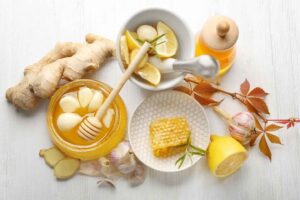Headaches affect individuals all over the world and are considered one of the most common medical issues, tens of millions of individuals suffer from it. Headaches can be experienced in many different ways from simple tension headaches, which most people can work through, to migraines, which sometimes prevent people from functioning altogether.
Since there are pain killers for headache relief, the excessive fear of drug side effects has pushed many to seek alternative approaches.
In this article, we highlight some of the non-pharmacological headache management strategies that have been used by some patients effectively, thus answering the needs of patients who seek relief without any harsh treatment.
Classification of Headaches
Headaches are very common nowadays. Here are a few classifications.
1. Tension headache
This headache type is the simplest of all and occurs mainly due to stress, anxiety, or muscle contraction of the neck and shoulders.
2. Migraine
The major defining character of a migraine is a possibly one-sided excruciating headache. Other associated signs include vomiting, extreme sensitivity to light and sound.

3. Cluster Headache
These headache attacks are of very high intensity and they presented in multiple cycles of attacks which are usually on one side of the head in the eye region.
Common Triggers of Headaches
Headaches can be triggered by a variety of factors. Here are some common culprits:
1. Stress
Emotional and physical strains are among the top causes of tension and migraine headaches.
2. Dehydration
Insufficient levels of water in the body present with water heads since it makes the brain shrink for a while.
3. Poor Posture
Muscle tensions in the shoulders, and neck due to either work or standing badly introduces attention headaches.
4. Lack of Sleep
Lack of sufficient sleep has been shown to decrease pain thresholds in people thereby making them even more prone to headaches.
Also Read: How to Prevent Migraines: Tips for Managing Triggers and Stress
Essential Oils for Headache Relief
Lavender Oil
Lavender oil is well-known for its soothing and relaxing effect. It can be used in aromatherapy or applied locally to tense muscles for relief
Recently, lavender oil has also been proven useful for treating migraine headaches, which is an added advantage to this treatment.
Peppermint Oil
This oil has the properties of both stimulation and sedative, promoting circulation and relaxing the tense muscles and tissues. Application of it to the temples or the back of the head is particularly effective in relieving headaches; indeed, tension headaches. The menthol content of the peppermint oil is meant to aid in muscle relaxation and blood circulation in the tired heads.
Eucalyptus Oil
This oil works extremely well with headaches if the reason for the headache is caused by the common cold or sinus infection. It being a herbal medicine, avoids suffocation by clearing the way of pressure in the nose. Applying eucalyptus oil can also reduce inflammation and may help relieve a headache because it clears the sinuses.
How to Use Essential Oils Safely?
Dilution
It is a common recommendation to dilute essential oils with suitable carrier oils such as coconut or almond before use so as to minimise skin irritation. In the case of topical application, essential oil is blended with a suitable base oil at the ratio of about two to three drops of essential oil as compared to one teaspoon of base oil.
Precautions
Essential oils must not be exposed to the eyes. For instance, a woman who is pregnant or breast feeding should look for medical opinion with regards to use of essential oils.
Role of Dehydration in headaches
Dehydration headaches occur when the brain temporarily contracts due to significant fluid loss, leading to pain. Therefore, in order not to have these headaches due to dehydration, it means that one should always be hydrated.
Tips for staying hydrated

Every Day Water Intake Suggestion
8-10 glasses of water (64 ounces) is the least that one should take in a day to refill his or her body in a bid to avoid uncommon water losses. Nevertheless, this is mainly dependent on an individual’s environment, level of physical activity and other factors, especially age.
Fresh Fruits and Vegetables
While many processed foods can be dry and dehydrating, fresh fruits and vegetables offer a refreshing and hydrating alternative. Packed with water content, these natural foods can help replenish fluids and keep you feeling hydrated throughout the day.
For instance, a juicy watermelon, a crisp cucumber, or a refreshing orange can provide a significant amount of hydration. Compared to processed snacks, which often have low water content, fruits and vegetables offer a more effective way to stay hydrated, especially during hot weather or after intense physical activity.
Beyond hydration, fresh fruits and vegetables also provide essential vitamins, minerals, and antioxidants that support overall health and well-being.
Water Infusion Drinks Ideas
Plain water drinking can sometimes become boring. In its place, keep a flavor of water and add lemon wedges, cucumber or mint leaves for added taste benefits as well as hydration.
Also Read: How Much Water Should You Really Drink?
Acupressure for Headache Relief
What is Acupressure?
Acupressure, an ancient practice, involves applying pressure to specific body areas to reduce pain. By targeting the affected area, acupressure can help alleviate headaches and promote overall health by reducing tension and stress in the body.
Most Common Acupressure Sites for Headache Relief
Head and Neck
Taiyang (TE21): Located at the temple, just in front of the ear.
Hegu (LI4): Found between the thumb and index finger, on the back of the hand.
Yinxiang (GV20): Situated at the base of the skull, in the hollow between the occipital bone and the cervical vertebrae.
Anmian (GB2): Located on the side of the head, about 2 inches above the ear.
Hands and Feet
Laogong (PC7): Located in the center of the palm, at the base of the middle finger.
Yongquan (KI1): Found on the sole of the foot, about a third of the way from the heel to the toes.
Steps on How Acupressure Techniques are Implemented
How to apply acupressure:
Locate the point: Use your fingertips to locate the specific acupressure point.
Apply pressure: Gently press and hold the point for 1-2 minutes. You should feel a slight tenderness or soreness.
Breathe deeply: Take slow, deep breaths while applying pressure to help relax your body and mind.
Additional Natural Remedies
Herbal Teas
Natural teas like ginger and chamomile have been here for ages when it comes to combating headaches. Ginger tea does all the good for inflammation while chamomile helps in relaxing the body and dispelling any form of tension.
Foods rich in magnesium
When it comes to stress-related headaches, magnesium is very useful and should be included in every person’s diet. Frequent headaches especially migraines have been associated with deficiency of this mineral. They help in easing the pain and decrease the demand for magnesium rich foods, such as nuts, green leafy vegetables, and many others.
Mindfulness And Relaxation Techniques
Deep Breathing Exercises
Deep breathing can lessen stress and tension, which can contribute to headaches. Otherwise, practising slow purposeful breaths enhances oxygen flow and relaxation.
Meditation
The practice of meditation on a regular basis reduces the amount of stress experienced in everyday life, thus helping in the management of stress in effective migraines. To be more specific, it helps in relaxing the body and mind while being focused on the problem at hand.
Also Read: Breathing Techniques to Reduce Stress
When to Seek Medical Attention
Signs Your Headaches May Require Medical Evaluation
Every person responds well to natural treatment methods but there are limitations on everything. If the headaches increase in intensity or frequency, or if there are other symptoms of blurred vision, confusion, or slurring of speech, then there is a need to see a doctor.
Consulting With Health Experts
It is crucial to have individualised treatment approaches for the patients suffering from chronic or intense headaches. A doctor can evaluate the existence of other health problems, the type of primary headaches, and offer treatment recommendations that work for you.
Conclusion
Headaches can be effectively managed by using various natural treatments such as essential oils, drinking plenty of fluids, applying acupressure and practising mindfulness as all these help target common headache-causing factors such as dehydration and stress. Such techniques are less damaging to the body and reduce reliance on medications.
Try these all-natural treatments to see which one works for you. Have you tried any of these remedies? Please tell us your stories and what helped you most below in the comments.
FAQs
What are the best natural remedies for tension headaches?
Lavender oil, peppermint oil, acupressure, and drinking plenty of water work well for tension headaches.
Can essential oils really help relieve headaches?
Of course, because aromatherapy using essential oils such as lavender and peppermint has been known to alleviate headache effects.
How much water should I drink daily to prevent headaches?
You should drink at least 8 cups (64 oz) of water a day. However, it may differ from person to person depending on how active they are and what type of environment they are in.













